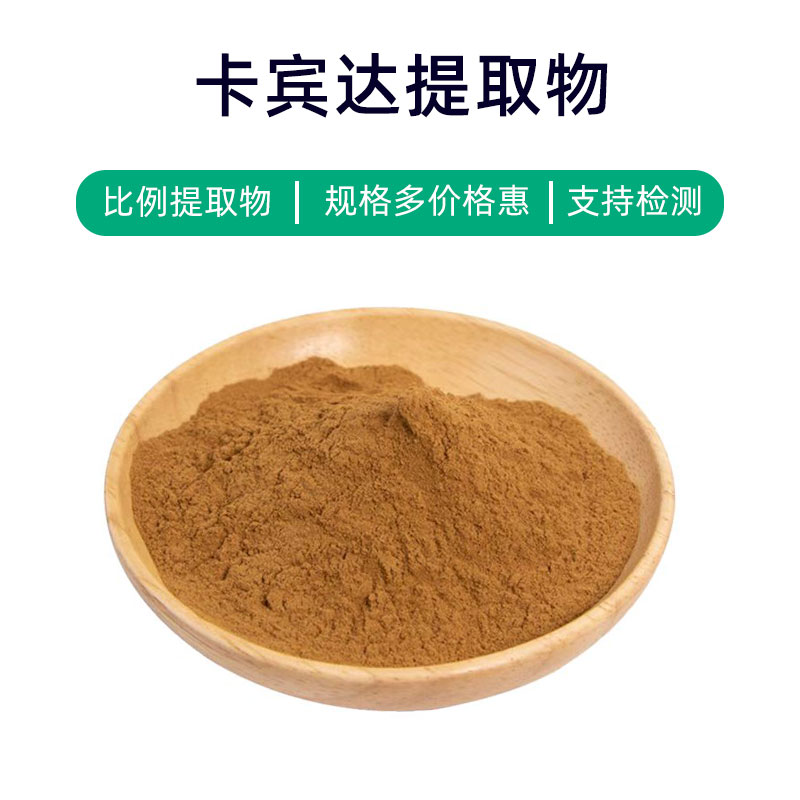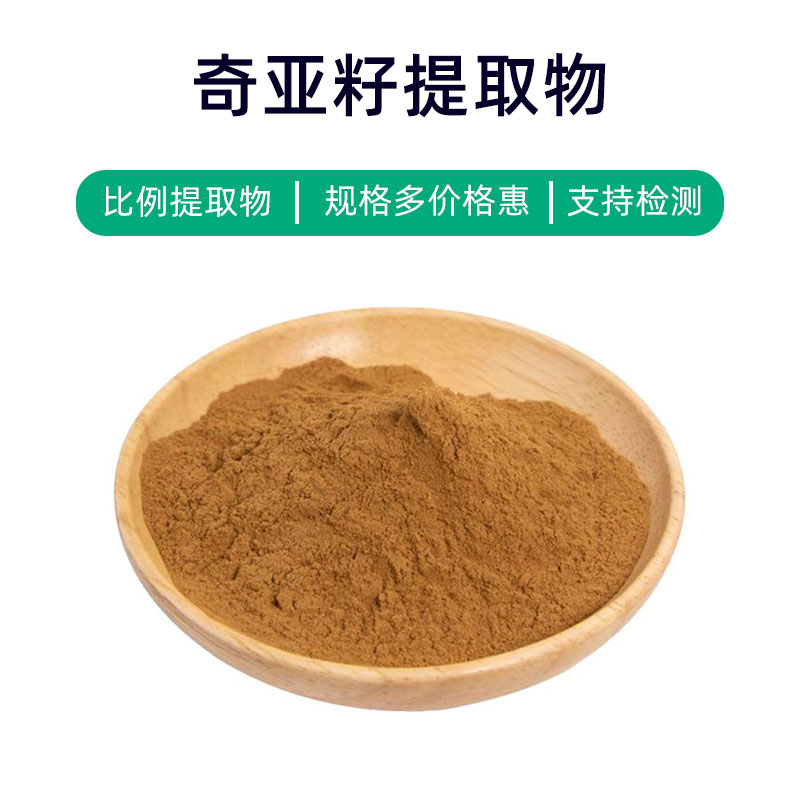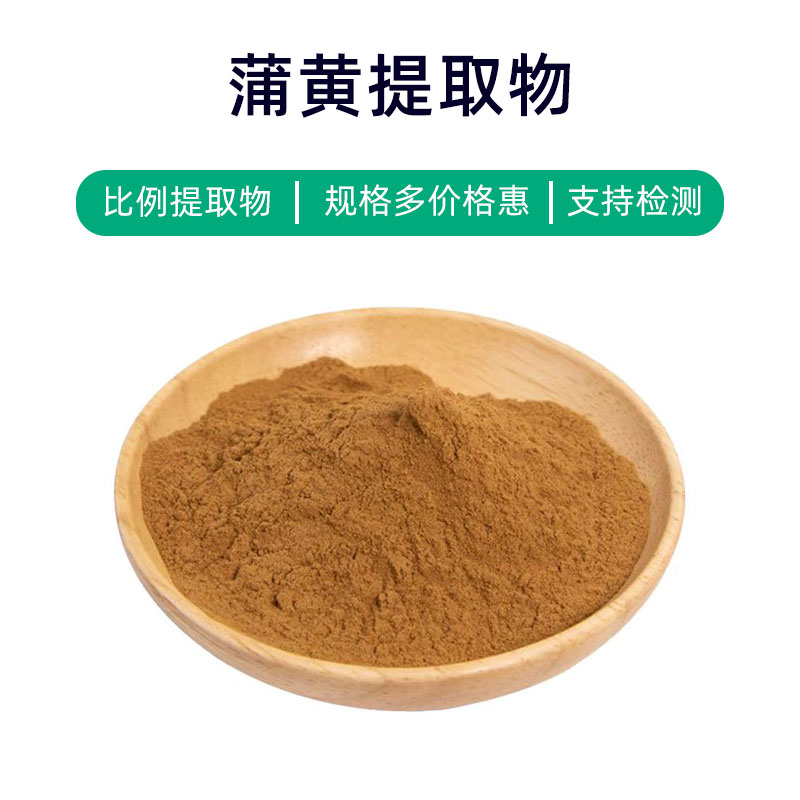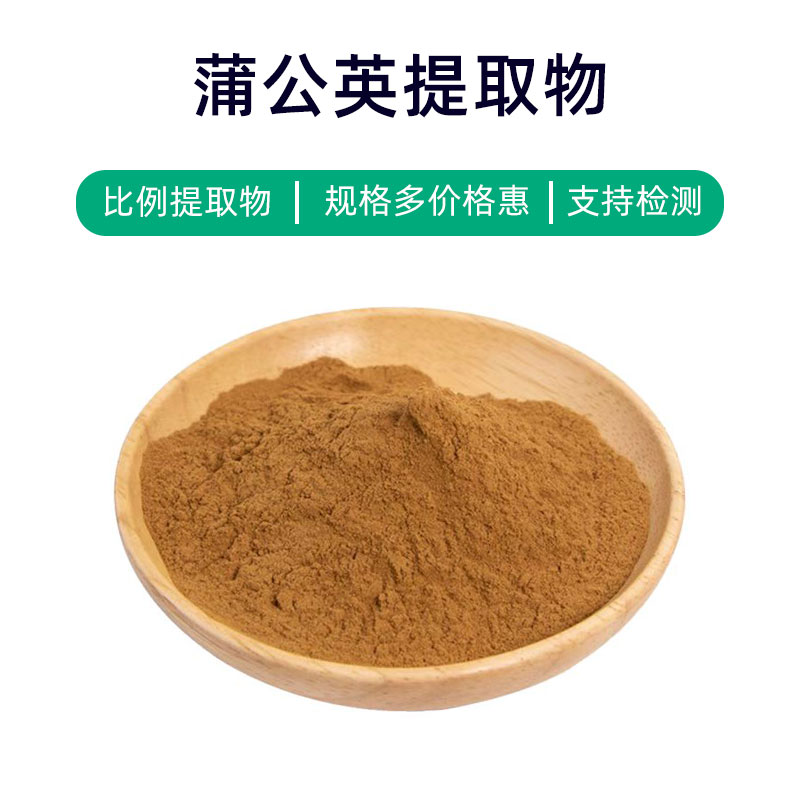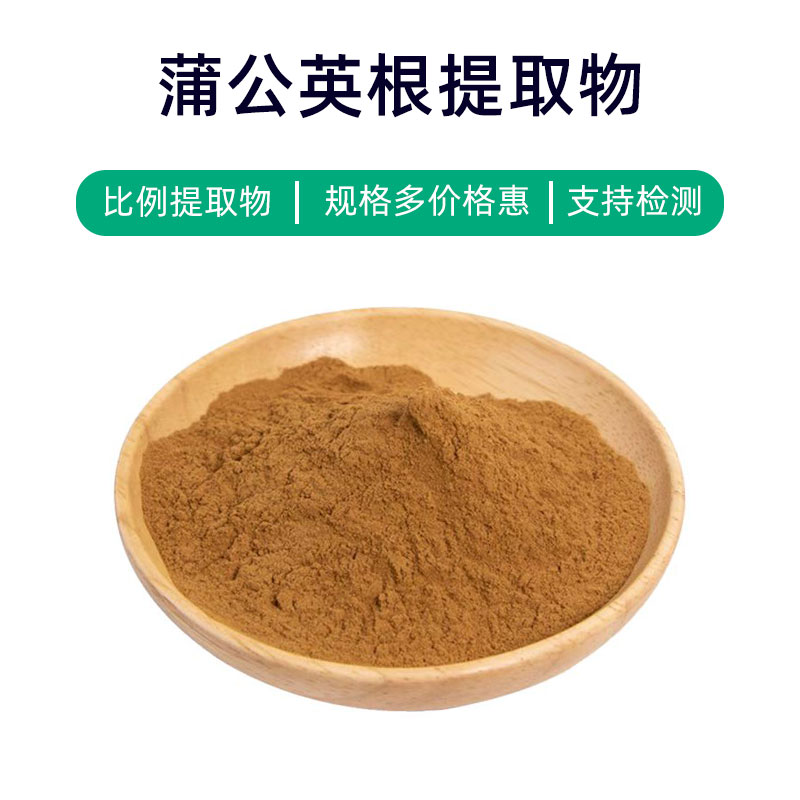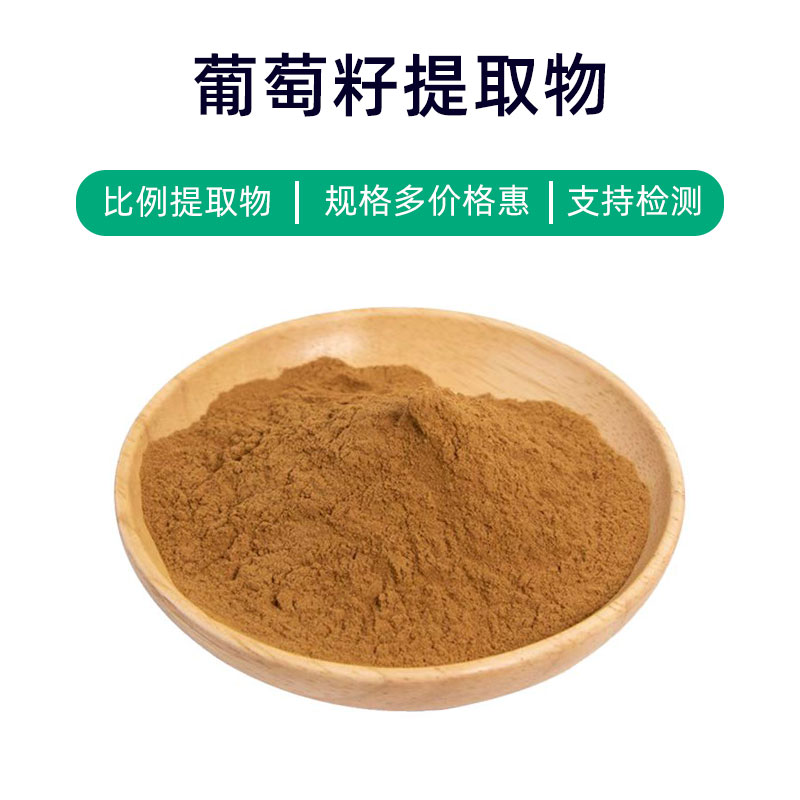Pomegranate Leaf Extract Product Introduction
Pomegranate leaf extract is a natural plant extract obtained from pomegranate leaves, with main components including anthocyanins, flavonoids, and tannins. This extract has various effects, particularly noted for its antioxidant, anti-inflammatory, antibacterial, and anti-aging properties. It's widely used across health supplements, skincare products, pharmaceuticals, and food additives.
Firstly, pomegranate leaf extract is rich in natural antioxidants like anthocyanins, which effectively eliminate free radicals, protecting cells from oxidative stress and slowing aging.
Secondly, this extract has significant anti-inflammatory effects, inhibiting inflammatory responses in the body and alleviating symptoms of inflammation-related diseases, such as arthritis and dermatitis.
Additionally, pomegranate leaf extract demonstrates excellent antibacterial activity, inhibiting the growth of various bacteria and fungi, making it useful in preventing and treating skin infections.
Finally, it's commonly found in anti-aging skincare products, promoting skin regeneration and repair, reducing fine lines and wrinkles, resulting in firmer and smoother skin.
In summary, as a natural plant extract, pomegranate leaf extract has multiple effects and a broad application prospect across various fields, providing effective support for health and beauty.
Pomegranate Leaf Extract Production Process
The production process of pomegranate leaf extract typically includes the following major steps:
- Raw Material Collection and Preparation: Fresh, high-quality pomegranate leaves are selected as the extraction source. After harvesting, the leaves are washed and initially processed to remove impurities and surface contaminants.
- Extraction Method Selection: Common methods for extraction include water extraction, alcohol extraction, or supercritical fluid extraction. Water extraction is one of the widely used methods, effectively extracting water-soluble components from the leaves.
- Extraction Process: The processed pomegranate leaves are placed in extraction equipment, and an appropriate amount of water or alcohol solvent is added for extraction. During the process, extraction temperature, time, and pressure must be controlled to ensure effective extraction and product quality.
- Filtration and Concentration: The obtained extract is filtered to remove residues and solid particles, resulting in an extract solution. Then, methods such as evaporation concentration or vacuum concentration are used to concentrate the extract to a specific level for further processing.
- Refinement and Purification: The concentrated extract undergoes further refinement and purification to remove impurities and unwanted components, enhancing product purity and activity.
- Drying and Milling: Finally, the refined extract is dried, typically using spray drying or vacuum drying methods, converting it into a powder form. The powder is then crushed and screened to control particle size and granularity.
- Packaging and Storage: The final pomegranate leaf extract is packaged, usually in sealed containers to prevent moisture and dust. It should be stored in a cool, dry environment, avoiding direct sunlight and high temperatures to ensure product quality and stability.
The above outlines the conventional production process for pomegranate leaf extract, where each step needs to be strictly controlled to ensure product safety and quality.
Efficacy and Side Effects of Pomegranate Leaf Extract
Pomegranate leaf extract, as a plant extract, is considered to have multiple effects in both traditional medicine and modern research. Here are its main benefits and functions:
- Antioxidant Properties: Rich in various natural antioxidants, like polyphenols and vitamin C, it helps eliminate free radicals and reduce oxidative stress on the body, aiding in cell health.
- Anti-Inflammatory Effects: Research indicates that pomegranate leaf extract contains abundant bioactive components that possess anti-inflammatory properties, alleviating symptoms of inflammatory diseases like arthritis and intestinal inflammation.
- Blood Sugar Regulation: Pomegranate leaf extract is believed to have potential for blood sugar reduction, promoting insulin release and improving insulin sensitivity, providing auxiliary treatment for diabetes.
- Blood Pressure Reduction: Some studies suggest that active components in pomegranate leaf extract can dilate blood vessels, enhance blood circulation, and help lower blood pressure, preventing cardiovascular diseases.
- Antibacterial Activity: Containing rich tannin and flavonoid compounds, pomegranate leaf extract exhibits antibacterial properties, inhibiting the growth of bacteria and fungi, and aiding in infection prevention.
- Anti-Tumor Effects: Some studies indicate that certain components in pomegranate leaf extract possess anti-tumor activity, potentially inhibiting the proliferation and metastasis of tumor cells, aiding in cancer prevention and treatment.
- Digestive Improvement: Rich in fiber and tannin compounds, pomegranate leaf extract can enhance intestinal motility, improving digestion and alleviating digestive issues such as indigestion and constipation.
- Liver Protection: Research shows that pomegranate leaf extract offers liver protection, reducing liver damage and promoting liver cell regeneration, beneficial for preventing and treating hepatitis and fatty liver disease.
Pomegranate leaf extract is generally considered a safe natural plant product; however, individual differences and possible allergic reactions should be noted. It is recommended for pregnant women, nursing mothers, and individuals with specific health conditions to use it under medical supervision.
Applications and Dosage of Pomegranate Leaf Extract
Pomegranate leaf extract has extensive applications in the fields of medicine, food, and cosmetics; here is a detailed introduction to its application scenarios and dosage:
- Medical Applications:
- Blood Sugar Control: Pomegranate leaf extract can serve as a natural supplement for diabetes management; it can be taken orally or made into a liquid, with a typical dosage of 5-10 grams, 2-3 times daily.
- Blood Pressure Lowering: It can be prepared as a liquid or capsule, with a typical dosage of 3-5 grams, 2-3 times daily, helping to lower blood pressure.
- Antibacterial and Anti-inflammatory: It can be created into topical ointments or oral liquids for treating conditions like mouth ulcers and skin infections. For topical use, apply as needed; for oral consumption, take 3-5 grams, 2-3 times daily.
- Food Applications:
- Additives: Pomegranate leaf extract can be used as a food additive in products like tea beverages or juices, generally at a dosage of 5-10 grams per liter.
- Flavoring Agent: It can be used to enhance baked goods and cookies, providing nutritional and flavor benefits from pomegranate leaves.
- Cosmetics Applications:
- Skincare Products: With antioxidant, anti-inflammatory, and moisturizing properties, it can be included in skincare items like masks or lotions, with typical usage of 2-5%.
- Cleansing Products: Including pomegranate leaf extract can help clean the skin, regulate oil secretion, and improve complexion, generally at a dosage of 1-3%.
Overall, pomegranate leaf extract can be used in the medical field as a natural supplement for blood sugar regulation, blood pressure reduction, and anti-inflammatory actions; in the food sector as an additive and flavoring agent; and in cosmetics as an ingredient in skincare and cleansing products. Dosages should be determined based on specific product formulations and intended uses, and it's advisable to use under professional guidance.
Pomegranate Leaf Extract Source Plant Description, Distribution, and Growth Environment
The source plant for pomegranate leaf extract is the pomegranate (scientific name: Punica granatum). Here’s an introduction to the pomegranate's description, distribution, and growth environment:
- Plant Description:
- Chinese Name: Pomegranate
- Scientific Name: Punica granatum
- Latin Name: Punica granatum L.
- Taxonomy: Family Rosaceae, Genus Punica
- Distribution:
- The pomegranate is native to the regions from Iran to the Himalayas and is a common fruit tree, now cultivated in temperate and tropical regions around the world.
- It is grown in various countries and regions across Asia, Africa, Europe, and the Americas.
- Growth Environment:
- Climate: Pomegranates prefer a warm, dry climate with high sunlight exposure, ideally thriving in temperatures between 68-86°F (20-30°C).
- Soil: They are not particularly strict about soil requirements but thrive best in loose, well-drained sandy loam.
- Growth Habit: Pomegranates are sun-loving plants that grow rapidly, are drought-resistant, and have strong adaptability, typically thriving below 1,000 meters in elevation.
- Growth Environment: Suitable environments include sunny areas with good air circulation and drainage, such as slopes, plains, and hilly regions.
In summary, pomegranates are highly adaptable plants that thrive in warm, dry climates and well-drained soils, growing best in areas below 1,000 meters in elevation. They are cultivated worldwide and are widely used in orchards and ornamental gardening.
Pomegranate Leaf Extract Processing and Storage
The processing and proper storage of pomegranate leaf extract are essential for ensuring its quality and stability:
- Processing:
- After harvesting the leaves, they should be cleaned and impurities removed before being air-dried or oven-dried to the appropriate moisture level.
- Dried leaves can then be crushed or extracted, generally using water or alcohol extraction methods to obtain active components.
- Storage:
- The extract should be stored in a cool, dry, well-ventilated environment, avoiding direct sunlight and high temperatures.
- Clear, sealed containers are ideal to prevent oxygen, moisture, and odors from penetrating.
- Prevent moisture to avoid deterioration or mold growth.
- Depending on the nature of the extract, low-temperature storage or the addition of appropriate preservatives may be needed to extend shelf life.
Proper processing and storage can ensure the quality and stability of pomegranate leaf extract, prolong its effective period, and maintain the integrity and activity of its active components.
Monica Sun is a seasoned expert in the plant extraction industry with over a decade of experience in research and production. She specializes in the extraction and purification of plant active ingredients, focusing on driving innovation in natural product applications. Monica has participated in the development of multiple functional plant extracts, delivering high-value natural raw material solutions for the health food, pharmaceutical, and dietary supplement sectors.









